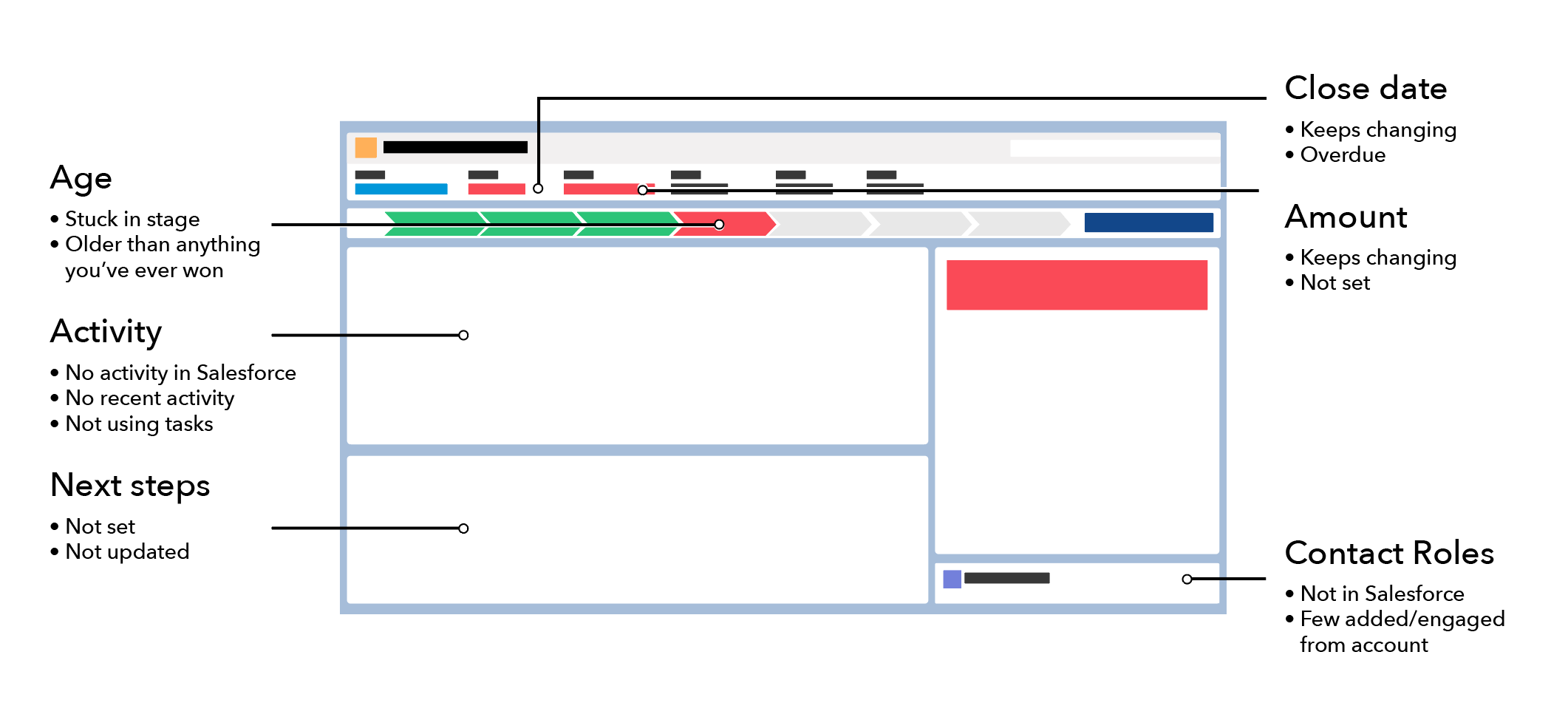Let’s start off with a quick fact:
Sales is a mathematical system.
Here’s the simple breakdown of the system:
-
Leads come in.
-
They convert at a specific volume, value, and velocity.
-
Revenue comes out.
And it’s the job of revenue leaders to optimize the sales system to make it run as efficiently as possible. The better the system is working, the better performance you’ll see from sales reps, the more success managers will find in their career, and the faster your company will grow.
The model for a sales system is follows a fairly standard path:
- Lead generated
- Assigned to a sales rep
- Qualified
- Pipeline
- Won
- MRR

Standard sales funnel with conversion rates.
The difference between a sales team and a growing sales team lies with sales performance
Take a look at the graphic below. The two funnels share the same system design, the same number of leads, but have a dramatic difference in the revenue output:

Incremental improvements to a sales funnel has BIG results.
Incremental improvements to sales performance
As you can see, it’s not big changes. Small performance improvements at each stage – 2-5% – have a BIG impact on the revenue number.
So, the question is – how do you make incremental improvements to sales rep performance?
Deal management.
Designing a sales system with healthy deal management in mind
Healthy deal management is a full team effort, but it starts from the top down with the leadership team identifying key deal health indicators that signal if a deal is healthy or not, designing a sales system with healthy deal management in mind, and making it a priority to the business.

Deal health indicators on a standard Salesforce opportunity page.
Key deal health indicators will differ depending on your business, but there are many that remain the same for every B2B sales organization using Salesforce.
Deal Health Indicators
Opportunity Age
Total age: the number of days from when the opportunity was created to today (or when the opp was closed)
Age in stage: the number of days an opportunity spent in a specific stage of your sales funnel
Activity
No activity: no activity has happened (or been logged in Salesforce)
No recent activity: some activity has happened, but the last activity was a while ago
Not using tasks: either not using tasks or having an overdue task in Salesforce
Next Steps
Not set: no next step is set on the opportunity
Not updated: the next step set on the opportunity is in the past and needs to be updated
Close Date
Keeps changing: the close date is pushed to the next month-end, or quarter-end, without moving stages or activity
Overdue: the close date is in the past
Deal Amount
Keeps changing: the deal size changes frequently (example: greater than 5-times)
Not set: no deal size associated with the opportunity
Contact Roles
Not in Salesforce: there are contacts on the opportunity, but no contact roles assigned
Single-threaded: there are many contacts within the account, but activity is only associated with one contact
By identifying what your key deal health indicators are, and minimizing them in the sales process, your entire sales organization will be able to build and maintain a healthier pipeline going forward.
So, the question becomes – how do you minimize deal health indicators?
Make them visible, make them actionable
The operations team controls how easy it is for everyone to see issues in Salesforce and take action on them on a daily basis.
There are a number of ways to tackle this, but a couple things your Operations team can do is edit commonly used Salesforce object layouts (Lead, Contact, Opportunity, etc.) to highlight key fields or create custom reports designed for sales reps.
But to make real change happen, we recommend setting up custom deal health alerts based on your deal health indicators that encourage sales reps to take action. This way, your sales reps are kept accountable to healthy deal management in an ongoing, consistent way.
Deal health alerts
Example:
When the age of an open opportunity has surpassed the longest a deal has ever been open for, alert the sales rep and sales manager so they can ask – is this deal still alive?
Example:
When there has been no sales activity on an opportunity in the past 30-days, alert the sales rep and sales manager so they can ask – is this deal still alive?
Example:
When the deal size on an opportunity changes 5+ times, alert the sales rep and manager so they can ask – is this deal still alive?
By designing your sales system with healthy deal management in mind, you’ll improve sales rep performance. Instead of one-off, “clean your room” type events, it’s an ongoing process that clears out bad deals earlier so sales reps can focus their time on healthy deals and improve overall sales performance.
Start improving sales rep performance now
We started off with a simple formula to sales: leads come in, they convert at a specific volume, value, and velocity, and revenue comes out.
What we learned
-
The key to improving the revenue number that comes out (while still having the same amount of leads) is making incremental improvements to sales performance.
-
The key to making incremental improvements to sales performance is to design the sales system with deal health management in mind.
-
The key to deal health management is making it visible, and actionable.
Remember that your organization is in full control of this system. The better its set up and executed on, the better your sales reps will perform.



